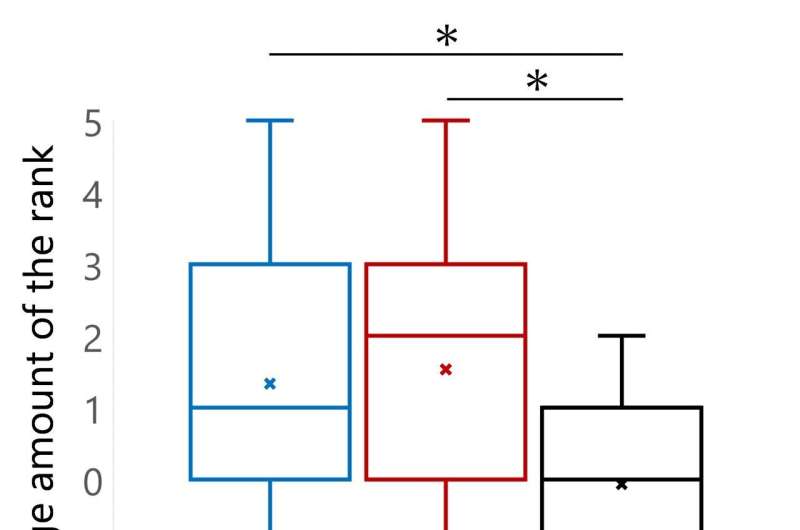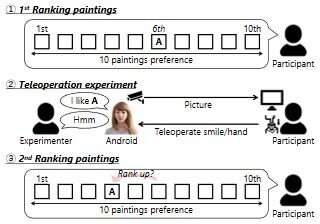Using a semi-autonomous robot to understand the psychological connections between machine and user

Humans have long been known to sympathize with the machines or computer representations they operate. Whether driving a car or directing a video game avatar, people are more likely to identify with something that they feel in control of. However, how the autonomous behavior of the robots affects their operators is not known. Now, researchers from Japan have found that when a person controls only a part of the body of a semi-autonomous robot, they are influenced by the robot’s expressed “attitudes.”
Researchers at the Department of Systems Innovation at Osaka University tested the psychological impact of remotely operating certain semi-autonomous robots on humans. These “telepresence” robots are designed to transmit the human voice and mannerisms as a way of alleviating labor shortages and minimizing commuting costs. For example, a human operator may control the voice, while the body movements are handled automatically by a computer.
“Semi-autonomous robots have shown potential for practical applications in which a robot’s autonomous actions and human teleoperation are jointly used to accomplish difficult tasks. A system that combines the ‘intentions’ of different agents, such as an algorithm and a human user, that are collectively used to operate a single robot is called collaborative control,” first author Tomonori Kubota says.

In the experiment, the team investigated whether the attitude of the teleoperator would align more with that expressed by the semi-autonomous robot when they controlled a part of the robot’s body. Beforehand, experimental participants were asked to rank a set of 10 paintings. They were then assigned to one of three conditions for controlling a human-like robot. Either they operated the robot’s hand movement, ability to smile, or did not control the robot at all. They were then shown the android speaking to another participant who was actually collaborating with the experimenters. The android recommended the painting that had been ranked sixth, and the experimenters recorded how much this influenced the robot operator’s subsequent ranking of that painting.
“This study reveals that when a person operates a part of the body of an android robot that autonomously interacts with a human, the person’s attitudes come to closely align with the robot’s attitudes,” senior author Hiroshi Ishiguro says.
This research indicates that in future implementations of “human-robot collaborations,” designers need to be mindful of the ways operators may be influenced by their role with subconscious changes in attitude.
The article, “Alignment of the attitude of teleoperators with that of a semi-autonomous android,” was published in Scientific Reports .
Humans interacting with robot found to mimic and synchronize with its movements
Tomonori Kubota et al, Alignment of the attitude of teleoperators with that of a semi-autonomous android, Scientific Reports (2022). DOI: 10.1038/s41598-022-13829-3
Citation:
Using a semi-autonomous robot to understand the psychological connections between machine and user (2022, June 27)
retrieved 27 June 2022
from https://techxplore.com/news/2022-06-semi-autonomous-robot-psychological-machine-user.html
This document is subject to copyright. Apart from any fair dealing for the purpose of private study or research, no
part may be reproduced without the written permission. The content is provided for information purposes only.
For all the latest Technology News Click Here
For the latest news and updates, follow us on Google News.

